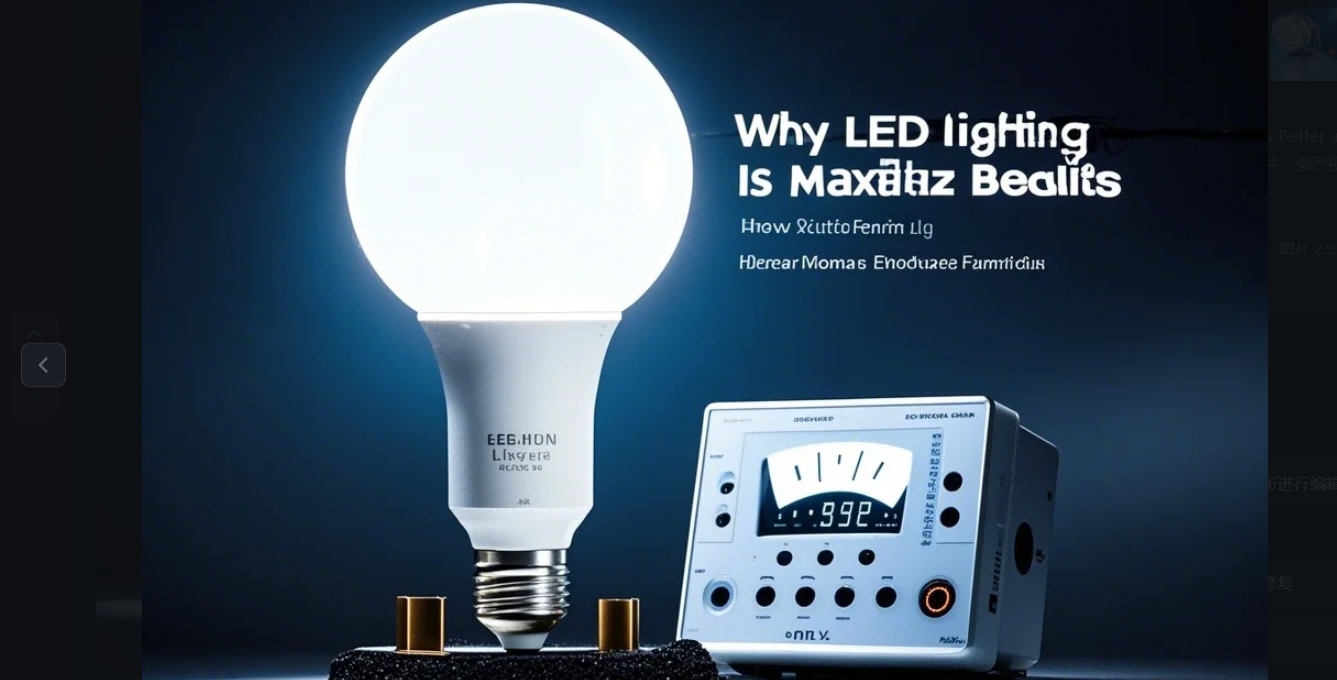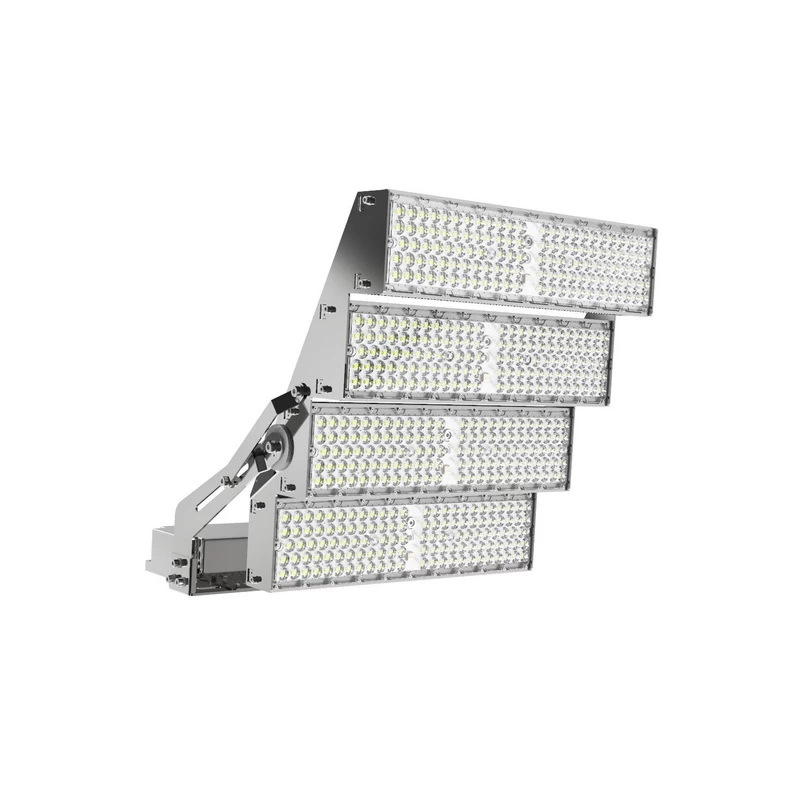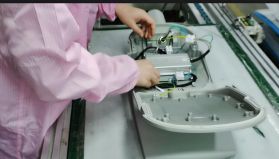LED Lighting Buyer’s Guide: Why LED Lighting is Better and How to Maximize Its Benefits
1. Introduction: Why Switch to LED Lighting Today?
LED lighting has rapidly gained traction worldwide as a sustainable, cost-effective, and versatile solution for various applications. Whether for residential, industrial, or commercial settings, LED lighting delivers unmatched efficiency and durability.
In this guide, we will look at why LED lighting is better. We will discuss its benefits, power use, and sustainability. We'll also cover topics like how to recycle LED lights and how much electricity does a LED light use. For industrial-grade solutions, we’ll highlight LedRhythm's innovative products and their applications across industries.
2. What Are LED Light Bulbs?

LED light bulbs, or light-emitting diode bulbs, represent a groundbreaking shift in lighting technology. Unlike traditional incandescent or compact fluorescent bulbs, LEDs offer high energy efficiency, long lifespans, and low heat emissions.
Key Features of LED Light Bulbs
FeatureDescriptionEnergy EfficiencyConsumes 75% less energy than incandescent bulbs.DurabilityShock-resistant and designed for extreme environments.Eco-FriendlinessRecyclable and free of hazardous materials.
For more technical insights, visit LedRhythm's news section.
3. Why Is LED Lighting Better? Benefits of LED Lighting
Switching to LED lighting provides numerous advantages over traditional lighting options. Here’s a detailed look at why are LED lights better:
3.1 Superior Energy Efficiency
How much electricity does a LED light use? LEDs consume a fraction of the energy required by incandescent bulbs. For example, an LED bulb with a brightness equivalent to a 60W incandescent bulb uses just 10W.
3.2 Cost Savings
Switching to LED bulbs can save households and businesses hundreds of dollars annually in energy costs. Learn more about the savings potential on LedRhythm’s blog.
3.3 Eco-Friendly Design
Unlike CFLs, which contain mercury, LED light bulbs are safe to dispose of and easier to recycle. Curious how to recycle LED lights? You can reuse many components, like metal and plastic.
3.4 Brightness and Durability
Why are LEDs so bright? The directional light emitted by LEDs ensures maximum illumination efficiency. Their durability also makes them suitable for extreme conditions, such as industrial settings and sports fields.
3.5 Versatility
LEDs come in many designs. They range from low heat light bulbs to strong industrial lights. This makes them suitable for different uses.
For more about LED lighting solutions for industrial use, check out the LedRhythm product range.
4. How Much Electricity Does a LED Light Use? Understanding LED Energy Efficiency

LED lights are the most energy-efficient lighting option available today. Here's a comparison of energy consumption between LED, CFL, and incandescent bulbs:
Comparison of Energy Consumption
| Lighting Type | Wattage | Lifespan (Hours) | Annual Energy Usage |
|---|---|---|---|
| Incandescent Bulbs | 60W | 1,200 | 328 kWh |
| CFL Bulbs | 15W | 8,000 | 82 kWh |
| LED Bulbs | 10W | 25,000 | 61 kWh |
Tip: Want to save even more energy? Explore switching to LED bulbs for your entire home or business.
For details on how LED energy savings compare, visit LedRhythm’s energy insights.
5. LED Lights That Don’t Produce Heat: Why It Matters
One of the key benefits of LED lighting is its minimal heat output. This makes them ideal for environments where low heat light bulbs are essential, such as kitchens, offices, and industrial facilities.
Applications of Heat-Resistant LED Lights:
Industrial Settings: Reduces the risk of overheating machinery.
Sports Facilities: Ensures consistent performance during high-demand usage.
Learn more about LED lighting for industrial applications at LedRhythm’s product .
6. How to Make an LED Lamp
Creating an LED lamp involves assembling essential components like LED chips, power drivers, and heat sinks. While DIY projects are possible, professional-grade LED lamps like those from LedRhythm offer unmatched reliability and performance.
7. How Do LED Lamps Work?
An LED lamp converts electrical energy into light through semiconductors. This process is vastly more efficient than the filament-based lighting of incandescent bulbs.
| Feature | LED Lamps | Incandescent Bulbs |
|---|---|---|
| Energy Efficiency | 90% efficient | Only 10% efficient |
| Heat Emission | Minimal | Significant |
| Lifespan | 25,000+ hours | 1,200 hours |
For an in-depth look at how LED lamps work, visit LedRhythm’s news blog.
8. LEDRhythm Product Series: Innovative Lighting Solutions
LedRhythm is a leader in providing high-quality LED solutions. Their products are designed to meet diverse needs, from industrial facilities to sports fields.
Key Product Series:
-
Diamond Series: High-lumen, durable solutions ideal for factories.
-
Slim Series: Lightweight and versatile for various applications.
-
Transformer High Pole Lighting: Tailored for large-scale outdoor use.
Check out the full lineup at LedRhythm’s product .
9. Why Led Light Are Important: The LED Advantage
Why are led light important? They illuminate homes, workplaces, and cities, contributing to safety, productivity, and comfort. With LED lighting and bulbs , you achieve these benefits sustainably and cost-effectively.
Additional Benefits of LED Lighting:
-
Reduced carbon footprint.
-
Minimal maintenance requirements.
-
Adaptable to smart lighting systems.
Learn how LED technology impacts industrial lighting at LedRhythm’s news.
10. Conclusion: Embrace the LED Revolution
Switching to LED lighting is more than an upgrade. It is an investment in sustainability, saving money, and better performance. LedRhythm offers products like the Diamond Series and Slim Series. These products allow businesses to enjoy the benefits of LED lighting.
For more technical insights, visit LedRhythm's news section.








